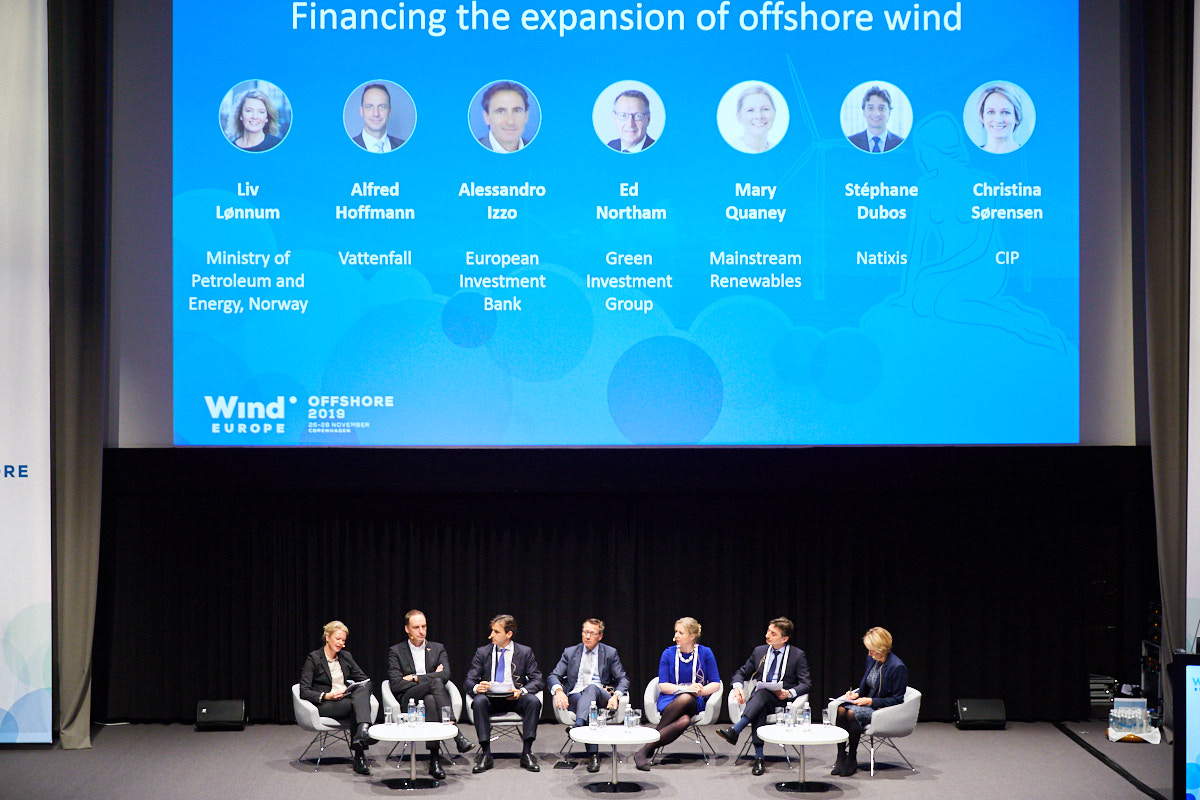News
The future of offshore wind financing: the capital is there – but we need long-term visibility

WindEurope Offshore 2019 Copenhagen
27 November 2019
Getting the financials right will be key to securing the 450 GW of offshore wind the European Commission envisages for 2050. Sustained levels of investments will be essential for projects and for grid development.
This morning at WindEurope Offshore 2019 in Copenhagen, a panel of experts – including financiers, policymakers and investment bankers – discussed the financials of reaching 450 GW. The IEA’s Brent Warner set the scene: offshore wind was fostered in Europe over the past 3 decades – current policies see Europe’s offshore capacity quadrupling by 2030. Europe will remain the market leader up to 2040, but China will be keeping pace and other markets in Asia will emerge rapidly. This means there will be serious competition.
A popular opinion is that European offshore wind should now be a fully merchant enterprise. This was the subject of much discussion during the panel, chaired by CIP’s Christina Sørensen. Natixis’ Stéphane Dubos argued that a supportive regulatory framework would be necessary to encourage price stability. The entire panel agreed on this point, with Mainstream Renewables’ Mary Quaney arguing that maintaining CfD mechanisms will be essential to retain low costs of capital. Alessandro Izzo of the European Investment Bank added that governmental support would remain essential: “Offshore wind can only deliver if it receives long-term policy support; development support, price & revenue support, and long-term visibility on project pipelines.”
Ed Northam of the Green Investment Group said that subsidies were all well and good – but they are becoming unsustainable from a political standpoint. There was widespread consensus that the capital to reach 450 GW is readily available, but investors require security and this is where governments still have a major part to play. “We can’t wait ten years for the costs of floating, for example, to fall,” Quaney said. “The urgency of climate action is too great.” Europe has put offshore at the core of its climate change solution – now it needs to provide the revenue support and frameworks to help offshore wind expand. Essentially, governments need to create conditions that enable the industry to explore the various liquidity options that will be needed for the massive expansion of offshore wind. Liv Lønnum Secretary of State in the Ministry of Petroleum and Energy, Norway, gave the example of how Norway’s government has encouraged its offshore industry through forward-thinking policy interventions. This is what is needed across Europe.
Vattenfall’s Alfred Hoffmann said that funding is out there – but we need more projects, clear frameworks from governments on permitting. We need to think about grids, integration, management, and directing government funding into Research & Innovation.
The overall agreement was: the industry wants to deploy offshore wind at the lowest cost for society; but getting to 450 GW will require long-term visibility on revenues and more certainty on consenting and planning.
How can Europe reach 450 GW of offshore wind? Find out in our new report Our Energy, Our Future, How offshore wind will help Europe go carbon-neutral

